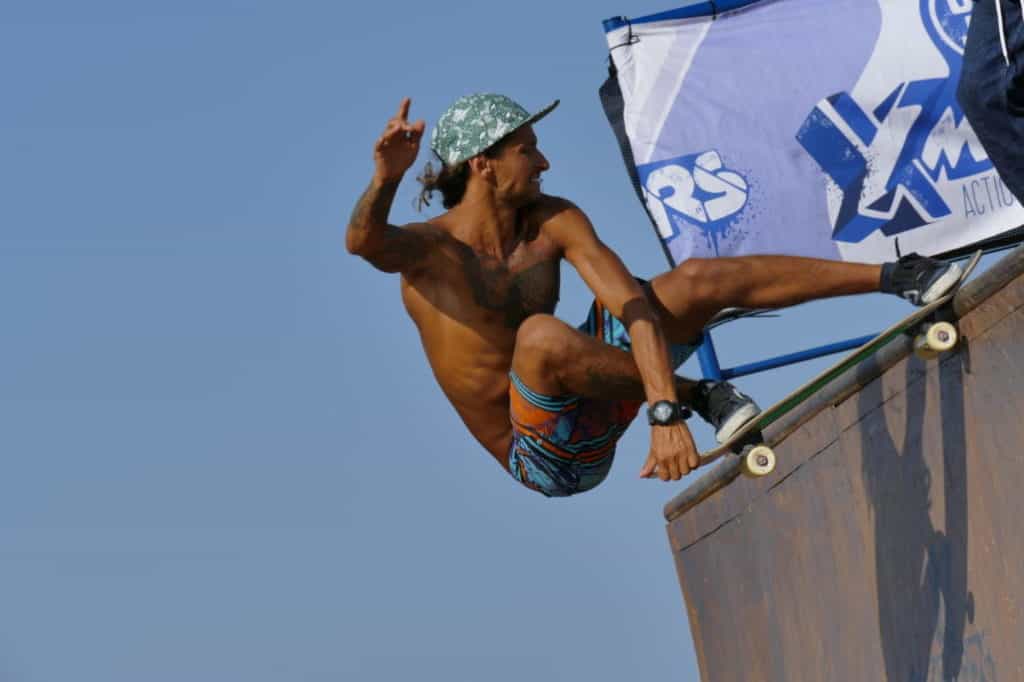I had no idea what to expect as I opened this book to the first page. The small amount of footage available where Rodney Mullen (“The Mutt”) actually talks about himself has painted a picture of a a geeky recluse, an incredible skateboarder certainly but also someone who is clearly very intelligent and in to a lot of other interesting things besides simply skating. This book, essentially an autobiography/biography (it’s not entirely clear what Sean Mortimers relationship to Rodney is or how much of the book was written by him), confirms all of this and more, going into detail about some particularly difficult and personal periods of Rodneys life.
The world–champion freestyle skateboarder and the man who brought the ollie – the trick that revolutionised the sport by taking it from the ground to the air – to street skating shares the history of skateboarding, as he tells the dramatic story of his life.
At 270 odd pages this is not a big read. The writing style is basic and functional, the sentences short and to the point. This is okay, the book is telling a story and is not a work of art in itself. However, if the books claim about Rodneys IQ is true then I would guess that Sean Mortimer wrote most if not all of the final copy, as it is no piece of literary genius.
The actual story follows chronologically Rodneys life from being a small child who set up lethal booby traps in his bedroom (no kidding…) right up to his work on “Rodney Mullen vs Daewon Song – Round 2” and “Opinion” at the start of the new millennium. During this story we are led through a fairly harsh childhood
lived in fear of a draconian father – the number of times Rodney was ordered to quit skateboarding is frightening – and a rocky road to stardom found through hundreds of demos and contests and what seemed like dozens of failed companies and false starts with various skate teams.
We’re also let in on how Rodney had come very close to suicide on more than one occasion – a fairly surprising revelation that certainly puts a new slant on the title of the book.

The main reason I bought this book was to learn more about Mullens actual skateboarding, and in this respect I wasn’t let down. There is plenty to inspire here. He would obsessively practice every day, using a stopwatch to time his sessions, and constantly theorise about skateboarding whenever he wasn’t actually doing it.
He built a fingerboard and miniature ramp setup so he could work out new ways to flip his skateboards at night when he was supposed to be sleeping (something I know well – I’ve spent many an evening in the pub imagining my cigarette paper packet is a skateboard and visualising tricks with it), and would keep detailed journals chronicalling his thoughts so he could put them into action in his next sessions. Part of every daily session was set aside to concentrate entirely on inventing new tricks.
Knowing all this, it’s clear to see why he became such a powerful creative force in skateboarding and eventually was crowned ‘the godfather of street skating’ after inventing pretty much every trick that forms the basis of modern street skateboarding.

I knew Rodney was credited as having invented the modern ollie, but had always assumed that this meant he’d been the first to actually do the trick, even though many other people might have imagined it and been trying it. However after reading the book it’s clear that during his solitary sessions he actually created tricks that nobody else had even conceived of. The same goes for kickflips and all the other tricks he would simply add on to the end of his competition runs. I can’t begin to imagine how cool that must have been to watch him at work, waiting to see what he’d come up with this time.
The book is lavishly illustrated with photos from throughout his life, mostly of him pulling tricks as you might expect. A colour section in the middle includes a couple of sequences of his newer freestyle/street hybrid style, a 5-0 grind to fingerflip and switch 360° flip to darkslide – two tricks that will be instantly familiar to any one who has seen his video footage.
The other thing about How To Skateboard And Not Kill Yourself is that it works as a pretty thorough introduction to the history of skateboarding, beginning with Powell Peralta ruling the roost and flatland skateboarding being the style of choice, progressing via the explosion of skate companies, lables and teams, the popularisation of vert skating (the king of which, Tony Hawk, turns out to be one of Rodney Mullens best friends) and the invention of street skating to the current skate scene today.

Sharing is caring!





